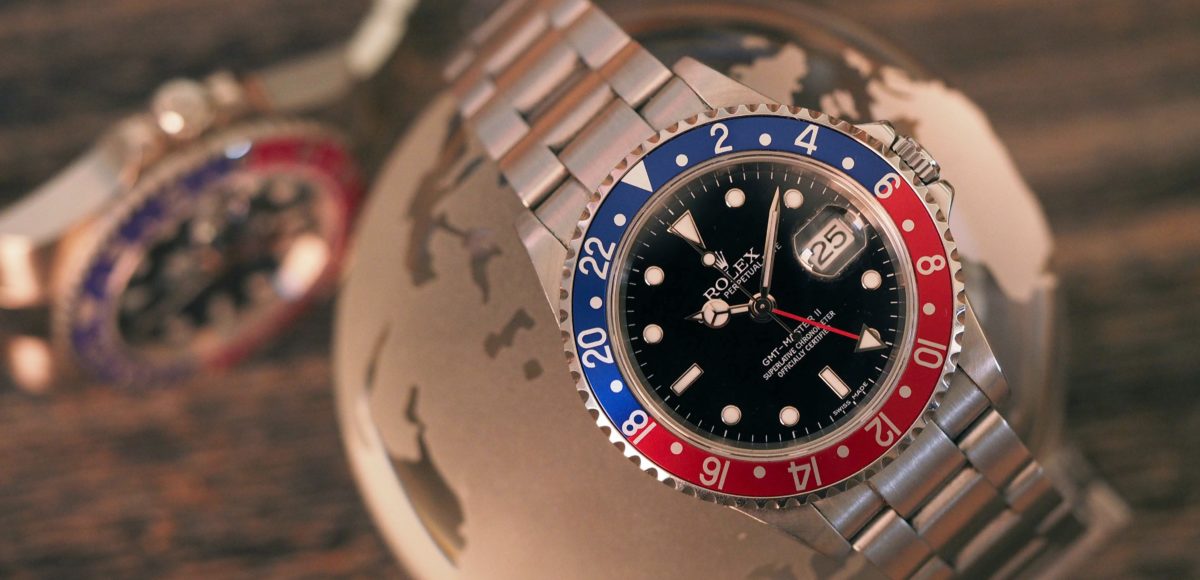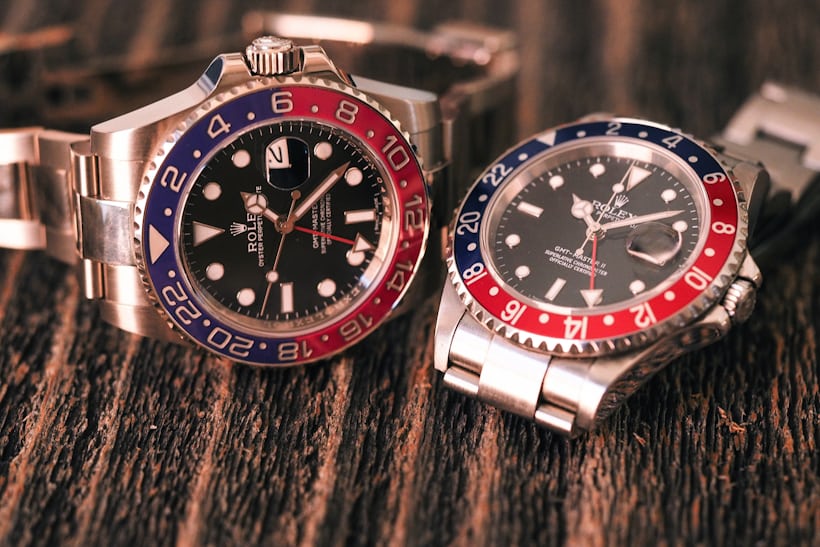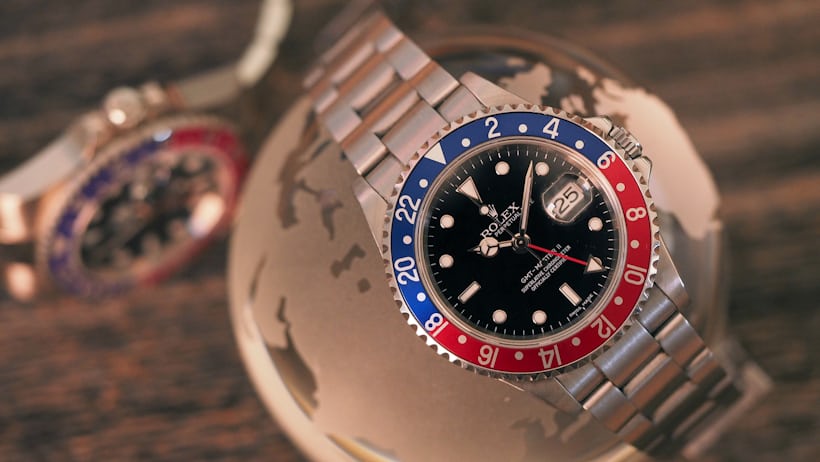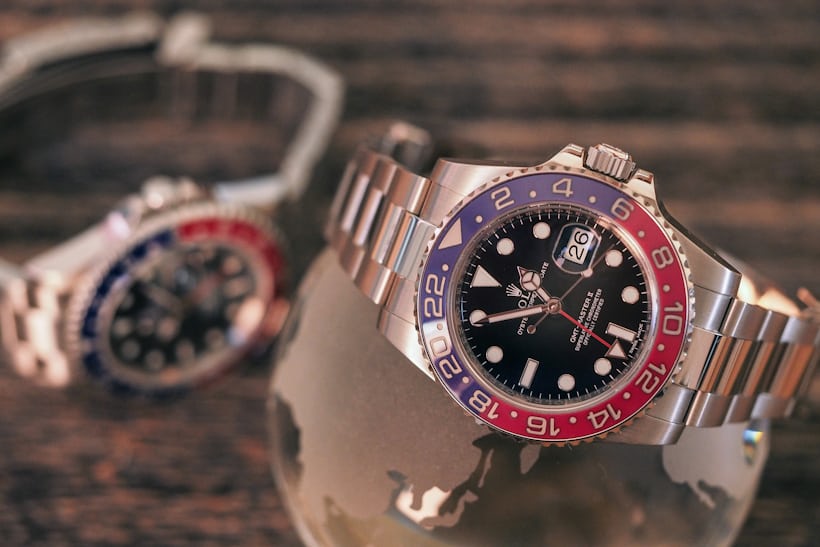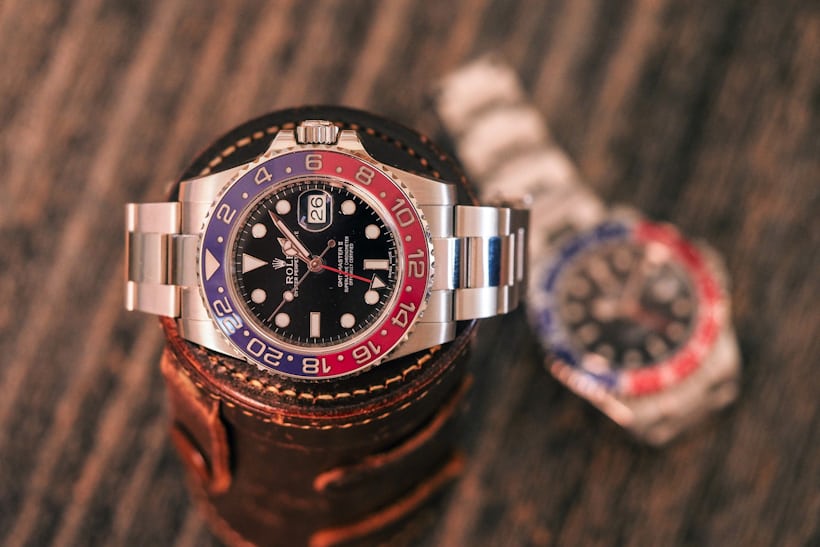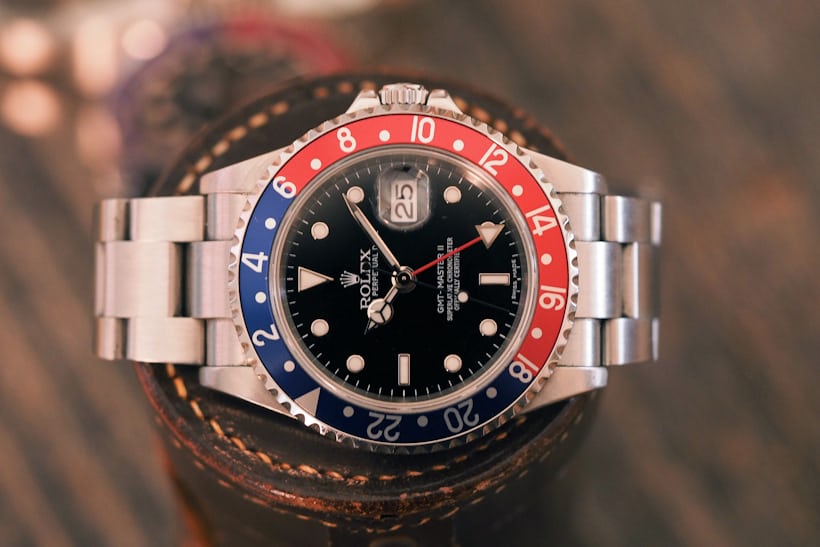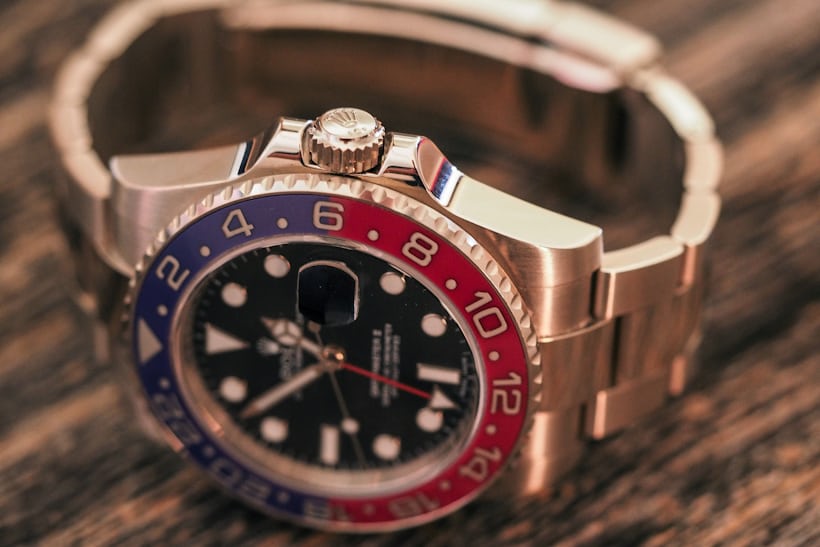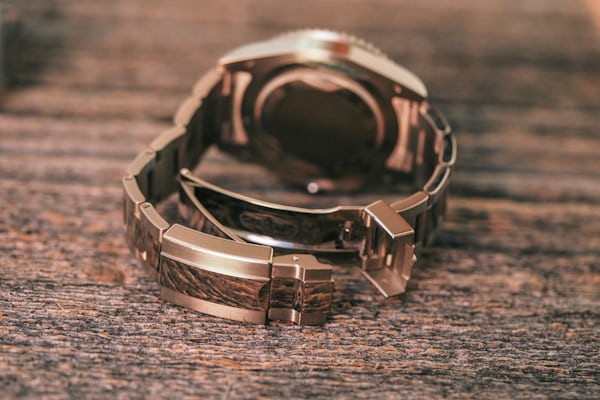Hands-On The Rolex GMT Master II Pepsi: Old And New Compared
The newest version of the Pepsi-bezel GMT Master Il brought a host of changes, but how does it stack up to the original?
Here’s the problem with being a Rolex fan nowadays: you begin to wonder if out of sheer boredom the folks over there are messing with us. Look at the last few years and what we’ve gotten in terms of Rolex design icons: an anniversary Daytona – but in platinum with an ice blue dial; the Yachtmaster Everose, which has the dial everyone wanted on a Sub… and of course, the piece de resistance in terms of evidence that Rolex is trolling us, they finally release an update to the much beloved, the iconic, indeed the original GMT Master – the Pepsi bezel – in 2014, and they deliver it in white gold.
We recently had two watches in the office: a late production series Pepsi bezel GMT Master II, and the new hotness, in all its white gold splendor. Naturally as diehard vintage Rolex fans we were prepared to hate on the newbie with all the spleen and venom we could muster (politely, but still) and we set the two of them – the classic, and the arriviste – up against each other, for what we thought would be a conclusive David vs. Goliath battle, with the outcome not in doubt even before the bell for Round 1. So here’s the problem: the GMT Master II in white gold, is a very, very good watch.
Let’s start out with the classic: the last of the aluminum insert GMT Master IIs, the 16710. This is one of the so-called stick dial GMT Master IIs, with the serifs absent on the “II” and it has inside – we assume, since we haven’t broken it open – the Rolex caliber 3186, one of the earliest watches to receive the movement with the then-new Parachrom Bleu balance spring. It’s a watch I’ve traveled with pretty extensively and in most respects I’m comfortable saying it’s essentially the ideal travel watch – legible, very versatile, happy to go from meeting room to trade show floor to long, bizarre Baselworld after-party not otherwise specified with all the aplomb you expect from one of the great classics from The Crown. It is right in the Goldilocks zone in terms of size and weight and it has tons of personality without one feeling like there’s a little gremlin sitting on your wrist going “me! me! me!” In short it has that most favored of Rolex traits: you wear it, not the other way ‘round; it is a tabula rasa upon which the story of one’s own adventures may be writ large (in tiny little hairline scratches, but still).
Now, the new guy. First impressions: the GMT Master II (reference 116719BLRO) has been to the gym. It’s a much more muscular watch; beefier case; you can feel the weight of each individual link but at the same time (and admittedly, a certain amount of all this is down to it being quite a lot of white gold) it doesn’t feel cumbersome on the wrist. (Interestingly enough, despite the impression of greater diameter one gets from the new GMT Master IIs vs. the old, they are the same size overall: 40 mm in diameter.) There’s a weird suppleness to the bracelet; that bank-vault-door combination of mass and precision that gets an awful lot of people who thought it would never happen addicted to Rolex precious metal watches. The bezel is heavier, too, and gone is the cheery brightness of anodized aluminum; instead we have the dull gloss of Cerachrom. Since the bezel is what gives these watches their nickname, let’s discuss.
Whatever you may feel about the cosmetics it is hard to argue that Cerachrom is simply a better material. It’s scratch-proof for all intents and purposes, it will not fade with exposure to the elements over time (as Picasso once said of ceramics, when someone asked him late in his life why he was doing so much pottery, “Shards are forever”). Rolex managed to develop a manufacturing technique that allows for a very crisp transition between the blue and white areas of the bezel as well. And one other very nice detail: the bezel now clicks in discrete one-hour jumps, making it easier than ever to mark time in three different time zones (home time, local time via the hour hand, and a third time zone using the bezel as a reference).
One of the little niggles I’ve always had with the old GMT Master II is the crown – it’s perfectly functional (we’re talking about Rolex here, after all) but it’s always felt just slightly too small for the job. Problem solved (or perhaps I should just say “improvement made”) in the new guy. The larger crown makes it definitely easier to re-set the hour hand to local time – again, not that it was exactly a Sisyphean task before but nonetheless, it’s a functional improvement. The dials are similar in design, but not identical – lume plots and hands are just slightly larger on the new model and it immediately seems more legible. Reference 16710 was not exactly a watch one struggled to read, but when you are fighting jet lag in the crepuscular gloom of some plane halfway between god-knows-where and you-can’t-remember-what, every little bit helps. I even like the larger crown guards. The older model’s crown guards always felt a little apologetic; there but making an effort not to call attention to themselves. The new ones feel like they’re saying, “You know what? We’re crown guards. That’s what we are. Gotta be me (we).”
Lastly, let’s look at the clasps. The 16710 has a perfectly serviceable one, but the New Guy has a much more secure-feeling Oyserlink clasp that gives a wonderful sense of durability and solidity.
The fact that one of these watches is steel, and one is white gold, makes this something of an apples-to-oranges comparison; the 16710 in steel is a great looking instrument watch with a pleasing feel of unadorned practicality and a lineage that goes all the way back to Pan Am and Pussy Galore, which is not a small thing. The new version is a bit surreal. To release this watch first in white gold was an interesting decision to say the least; obviously we are all waiting with bated breath for a steel model. Making one of the most beloved tool watches of all time in a precious metal is downright odd; I’m quite certain, all kidding aside, that Rolex did not do it as a practical joke but at the same time, it’s sort of like using Kobe beef to make imitation tofu – you just expect things to be the other way around.
None the less the fact remains that taken purely on its merits as a tool watch – leaving the precious metal out of the equation entirely – this is simply a technically superior watch. The bezel is improved, all ergonomics are improved, the clasp and bracelet are better; legibility is improved; little things like changing the bezel rotation so it lines up smartly on the hour every time are pretty solid indications that Rolex is doing what we like most about it – making things better one small detail at a time. (If you wanted to, you could even argue that white gold, being insusceptible to corrosion, is a more practical material than steel.) On the other hand, the 16710 has a charm and sense of connection to the past earned over many years – the new Pepsi may grow into that, however, as it spends more time out in the world. It’s a watch I’ll always love, but after spending some time with the reference 116719BLRO it’s hard to avoid concluding that Rolex made a great thing even better.
Get More Articles Like This in Your Inbox
We're constantly creating great content like this. So, why not get it delivered directly to your inbox? By subscribing you agree to our Privacy Policy but you can unsubscribe at any time.





